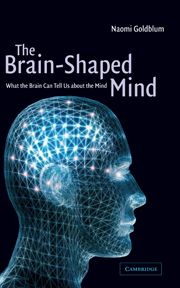Book contents
- Frontmatter
- Contents
- Preface
- Figure permissions and acknowledgments
- 1 Introduction
- 2 What the brain cannot tell us about the mind
- 3 How neurons form networks
- 4 Theories and models of how the mind functions
- 5 What are connectionist networks?
- 6 How our networks learn
- 7 Connecting the networks: how different things are related
- 8 Evidence for connectionist models
- 9 Two different types of memory
- 10 Coping with disaster
- 11 Practical implications
- 12 Criticism of connectionist theory
- Annotated references and suggested readings
- Index
4 - Theories and models of how the mind functions
Published online by Cambridge University Press: 02 December 2009
- Frontmatter
- Contents
- Preface
- Figure permissions and acknowledgments
- 1 Introduction
- 2 What the brain cannot tell us about the mind
- 3 How neurons form networks
- 4 Theories and models of how the mind functions
- 5 What are connectionist networks?
- 6 How our networks learn
- 7 Connecting the networks: how different things are related
- 8 Evidence for connectionist models
- 9 Two different types of memory
- 10 Coping with disaster
- 11 Practical implications
- 12 Criticism of connectionist theory
- Annotated references and suggested readings
- Index
Summary
Now that we have some idea of how the neurons in the brain form networks and how these networks operate, we are in a position to take a good look at the question of how the mind works. Remember that we are assuming that the functions of the mind – how we learn new things, how we remember the things we have learned, how we combine the things we have learned to create new entities – are embodied to a great extent in the workings of the brain. The question we are now asking is how these functions of the mind are shaped by the paths taken by currents of electricity and wandering molecules within the brain.
The latest theories about how the functions of the mind are grounded in the operations of the brain are known as “connectionist” theories or models. The difference between the theories and the models that is important for our purposes here is that the theories are attempts to formulate general rules about how the mind performs its various functions, whereas the models are attempts to simulate these functions on computers. The theories are like all new scientific theories – they are systems of generalizations that are based on a new way of looking at accumulated observations which no longer seem to fit the old theories very well. The new generalizations are then examined to see how they could be tested, and experiments are carried out to see if the predictions made by the new theories are fulfilled.
- Type
- Chapter
- Information
- The Brain-Shaped MindWhat the Brain Can Tell Us About the Mind, pp. 30 - 39Publisher: Cambridge University PressPrint publication year: 2001



